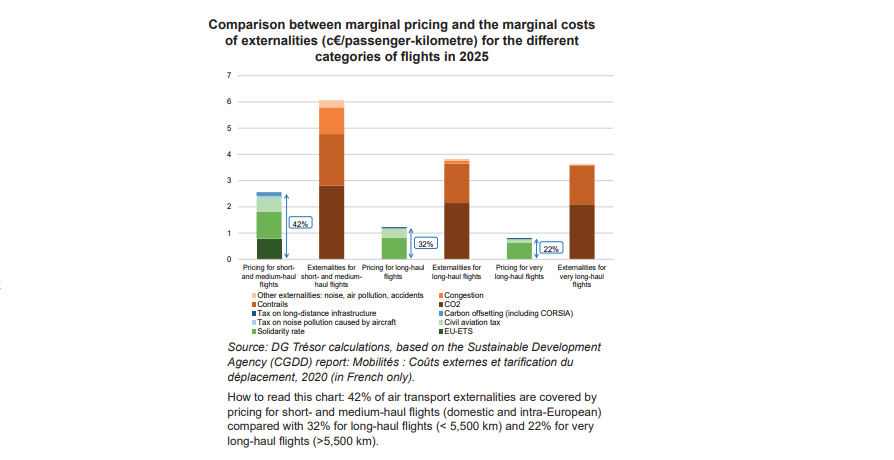Air Transport Pricing and Taxation
Air transport contributes to France’s economic activity but generates substantial negative externalities, especially climate-related ones. It is subject to specific pricing at national, European and international levels. This paper compares the external costs and pricing arrangements in order to assess coverage of these costs by existing instruments. It flags up average under-pricing for use, particularly for long-haul flights.
Air transport makes a major contribution to France’s economic activity providing 89,000 jobs and forging strong ties with the tourism sector. It allows for interconnections at regional, national and international levels due to its network effect. However, the airline industry also causes negative externalities, especially climate-related ones.
According to economic theory, optimum transport pricing involves having users pay for the social cost of their travel, i.e. the additional monetary and non-monetary costs that a journey generates for society as a whole. This covers both the costs of the service provided to the user (fuel and aircraft maintenance in the case of air transport) and those imposed on non-users, meaning the negative externalities associated with a journey, such as noise pollution and greenhouse gases. Whilst the former are theoretically included in the price of the airline ticket, the latter are not taken into account in the absence of government intervention.
The airline industry has a multi-tiered pricing system that is globally correlated with these negative externalities. Internationally, the Carbon Offsetting and Reduction Scheme for International Aviation (CORSIA) imposes emission offsetting requirements over and above a baseline. At European level, the carbon market covers emissions from intra-EU flights. In France, several taxes are levied on the sector, in particular the solidarity rate which was increased by the 2025 Initial Budget Act.
In 2025, French air transport pricing covers an average of around 34% of all its negative externalities. This means that when a flight causes disturbances costing society €1, the user only pays 34 cents.
In the medium term, with regard to carbon emissions, the most economically-effective solution is still to roll out pricing instruments at international level. These instruments would provide coverage of the carbon externalities for the entire industry whilst ensuring fair conditions for competition, thus mitigating carbon leakage.
